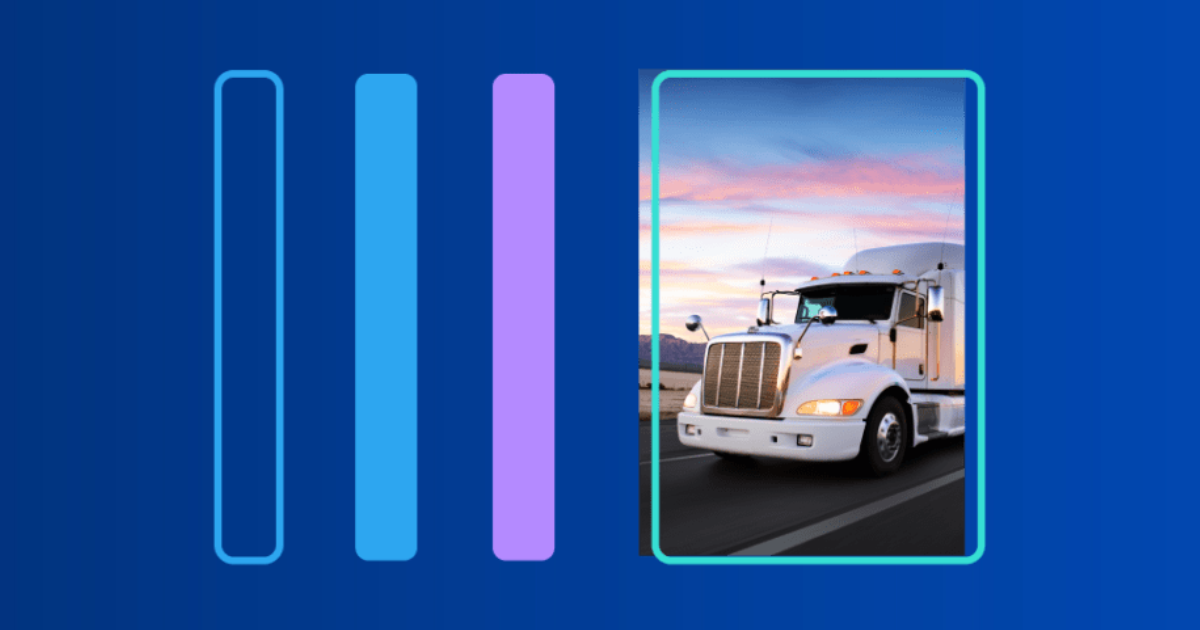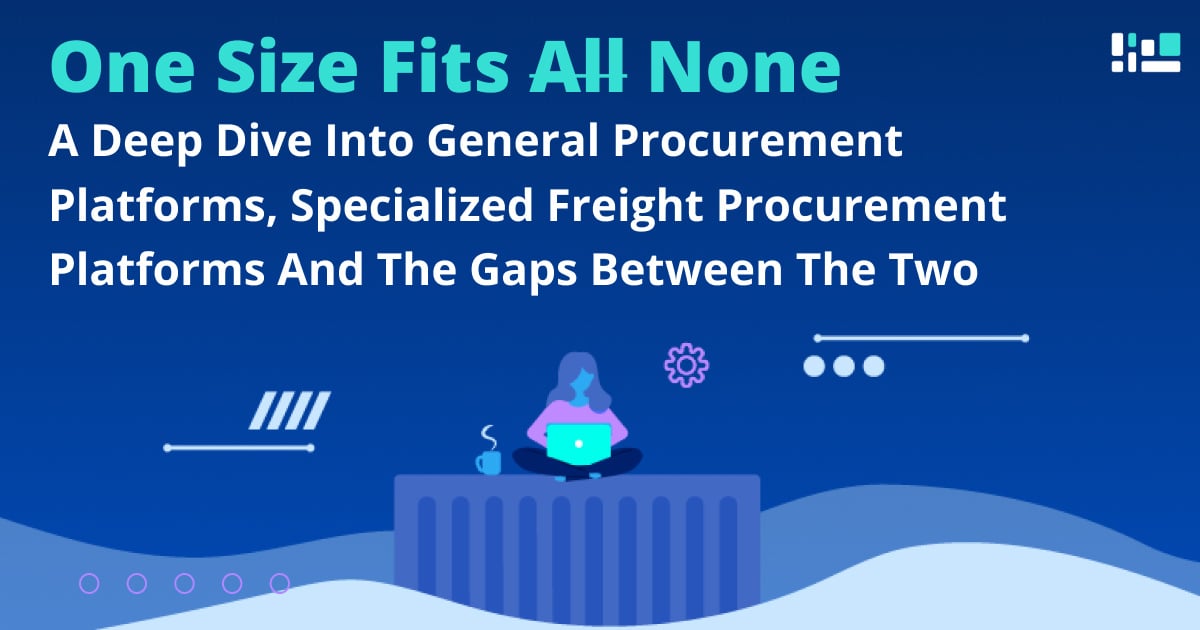Does it ever feel like as soon as one freight bottleneck crisis is over another immediately begins?
The number of bottlenecks at ports and shipping lanes is causing freight delays to skyrocket with over one-third of containers arriving late.
So what's causing all these bottlenecks and what can you do to ensure your freight isn't impacted when they occur?
What is causing shipping bottlenecks?
Workforce disruptions
Huge amounts of port work are mechanical these days. But even with so much logistics technology, we still heavily rely on the human workforce at ports.
This was made clear during Covid-19 when workers were in lockdown in ports across the world causing trade to slow. A Covid-19 outbreak at Yantian terminal near Shenzhen, and the subsequent shutdown of the port, created a bottleneck lasting for weeks.
Covid-19 isn’t the only time workforce disruptions have caused bottlenecks, strikes can also impact port operations. In 2014, a port strike in Chile caused an estimated loss of $200 million in fruit exports that all perished waiting to be shipped – the total cost of the strike reached over $500 million.
Sudden increases in demand
If the economy suddenly shifts and certain goods unexpectedly become high demand, it’s difficult for ports and shipping lines to adjust their fleets and capacity to move it.
For example, in Q2 2020, consumer spending suddenly increased from the initial pandemic slump and Asian manufacturers had recovered enough to restock goods. However, big shipping lines that had slowed down operations couldn’t build their capacity quick enough to meet demand.
This caused a container shortage as many empty containers were stuck in the US and Northern Europe, meaning there weren’t enough containers to export goods from Asian ports.
These factors combined to create bottlenecks in both Asian ports (that didn’t have enough containers to move goods) and at US ports as some shipping lines refused to wait to fill the containers with US goods, choosing to reposition them empty to save time.
Force majeure (acts of God)
Force majeure (or acts of God) is any extraordinary event that causes disruption in the supply chain. Lots of things can fall under force majeure including:
- Extreme weather
- War
- Riots
- Natural disasters
- Epidemics
- Sudden legal changes
The trouble with force majeure is it's unpredictable - and like the Suez Canal blockage - can be one of the slowest bottlenecks to unblock.
Festive seasons and celebrations
We all love festive periods of the year – but they cause massive disruptions to the shipping industry. There are two festivities that cause the biggest shipping bottleneck disruptions:
- Christmas time: Around Christmas time the amount of goods being shipped massively increases to meet the surge in consumer demand for gifts and festive decorations and food. This increase in demand causes jams and bottlenecks at ports and on lanes in the months leading up to Christmas.
- Chinese New Year: This is China’s biggest and most important holiday. It occurs every year on February 21st and can last up to a month. Over Chinese New Year factories across China shut down or reduce to minimum capacity as hundreds of millions of people head home for the holiday. As China is the world’s biggest exporter (exporting over $2.6 trillion worth of goods every year), this has a massive impact on supply chains. To get stock shipped before this massive shut down, volumes of sea freight moving goods from China massively increases causing bottlenecks at ports.
How to avoid lane and port bottleneck disruptions
Plan ahead to avoid shipping bottlenecks
Get prepared for shipping bottlenecks you can predict, like those caused by seasonal celebrations. When you're creating your freight strategy, plan around these dates ahead so you're ready for the increase in sea traffic.
If you have goods that aren’t time critical, wait until after big events, like Chinese New Year, to ship them. This will prevent delays and if you’re buying spot, reduce the cost of the shipment.
Or if you're shipping non-perishable goods, ask if your customers are happy to receive the stock early so you can ship your goods before these busy periods even start. Planning ahead like this will ensure you're never caught out by a busy season.
Avoid busy lanes and ports that bottleneck easily
There are some lanes and ports that are more likely to bottleneck than others. For example, if ships don’t use the Suez Canal, they have to take a much longer journey around the continent of Africa - so this will always be a lane with high traffic.
You might not be able to avoid routes like the Suez Canal, but if you diversify your lane management you may be able to find alternative routes and ports for time-sensitive goods that have to arrive on schedule.
Working with more carriers and using more lanes might seem like it will overcomplicate an already complex procurement process. But with today's eProcurement platforms, diversifying your carrier and lane networks is now straight-forward.
This new type of tech also helps you get unrivalled visibility into your supply chain...
Use the right tech to create visibility in your supply chain
When you’re moving goods across oceans, keeping track of where your cargo is and whether it’s on time can be tricky.
But there’s innovative tech available today that can help you get visibility over your freight and give you time to make a plan B.
Did you know you can now track exactly where your shipments are using global AIS vessel software, like Vessel Tracker? This software shows you exactly where your ship is and whether it’s going to hit disruptions. Knowing if your shipment will hit a jam or bottleneck in advance, gives you time to make a contingency plan, like booking spot air freight that can get your time-sensitive goods there in time.
Similarly, if you use an eProcurement platform like SHIPSTA, you can find alternative forms of transport in your current rates using a Rate Calculator – so you can find a solution to your bottleneck in minutes.
Will freight procurement bottlenecks continue in 2022? Read our freight market forecast to find out.
About SHIPSTA
SHIPSTA powers smart logistics procurement with a digital platform that connects shippers and carriers to ensure a frictionless procurement process for spot and contract buying, entirely online. It automates complex tasks, provides unrivalled visibility and supports fast data-driven decision making.
Designed and built by experts in logistics procurement, SHIPSTA is bringing transparency, automation and efficiency to the global logistics industry. It is used by some of the world’s largest companies to respond to market volatility, control freight costs and manage risk. The company was founded in 2015 and is based in Mertert, Luxembourg and Hamburg, Germany.



